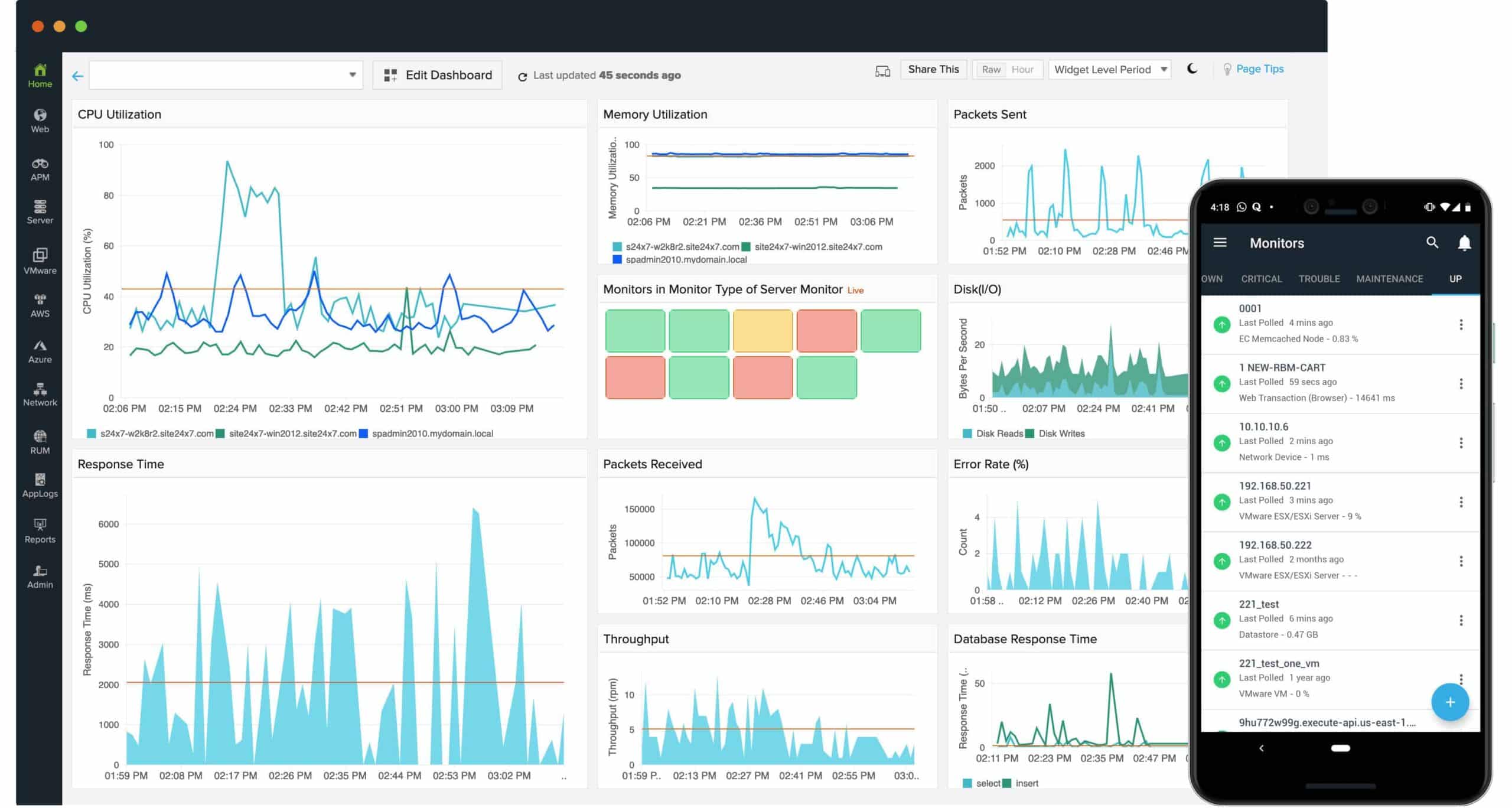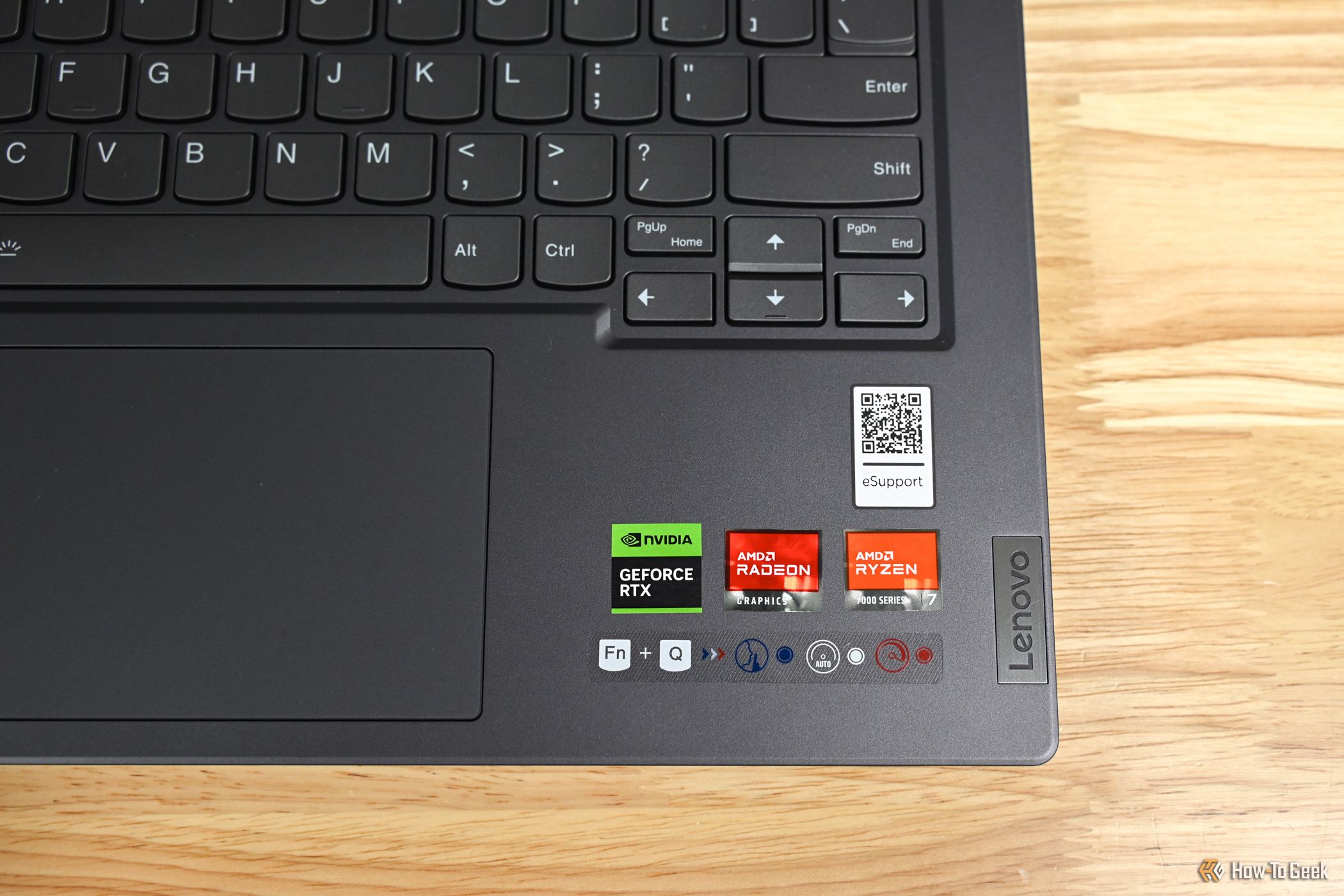Vendor Spotlight: Site24x7

Site24x7 is closely linked to two other businesses that we cover in our Vendor Spotlight series: Zoho Corporation and ManageEngine. The history and direction of Site24x7 is derived from the development of ManageEngine and it is controlled by Zoho.
The Site24 brand had to be differentiated from the ManageEngine marque, and that strategy has shaped the Site24x7 platform and its presentation to the market. This is a very interesting company that was created fully fledged as a sophisticated monitoring platform, avoiding all the struggles, pitfalls, legal disputes, and triumphs that IT startups typically face.
Site24x7 Founding and Background
Site24x7 was founded in 2006 as a division of Zoho Corporation, a company well-known for its suite of online productivity tools and software solutions. Zoho Corporation, formerly known as AdventNet, launched Site24x7 to address the growing need for comprehensive, cloud-based monitoring solutions. Zoho Corporation had already started up a successful system monitoring tools division, called ManageEngine.
The marketing advantage that ManageEngine had over its main rivals was that the company produced its software for Linux as well as Windows Server – SolarWinds and Paessler only produce their software for that one platform. The cloud presented a new opportunity to software producers with the creation of the Software as a Service model. Rather than port ManageEngine to the cloud, Zoho created the new Site24x7 brand that duplicated the on-premises ManageEngine products.
Site24x7 was created to offer IT administrators, developers, and operations teams a unified platform for monitoring websites, servers, networks, and applications. The goal was to provide a tool that could handle the increasing complexity of IT infrastructure and the shift towards cloud computing.
Over the years, Site24x7 has expanded its capabilities, integrating artificial intelligence and machine learning to provide deeper insights and predictive analytics. Today, it is used by organizations worldwide to ensure optimal performance and availability of their IT resources.
Timeline and Evolution
- 2006: Site24x7 was created as a division of Zoho Corporation. At this point, the platform was under development internally within the ManageEngine development team.
- 2007: The brand was launched to provide website monitoring services, allowing businesses to monitor the uptime and performance of their websites from multiple global locations.
- 2008: Site24x7 expanded to six data center locations around the globe to examine website delivery monitoring.
- 2009: Makes Site24x7 monitoring services available via APIs.
- 2010: The company produces a mobile app to access the monitoring dashboard. This app is available for iOS and Android.
- 2013: The launch of APM Insights, which uses code profiling for Java, .NET, and Ruby and distributed tracing to monitor APIs, Web services, and microservices. Monitoring for virtual and delivery systems is added to track virtualizations, containers, and cloud platforms.
- 2014: Site24x7 introduces real user monitoring and mobile app monitoring to enhance user experience measurements.
- 2015: The platform extends its services to site monitoring with system discovery and monitoring for networks and servers.
- 2016: The plug-ins library is launched. This is a service that is often referred to as “integrations” on other platforms. The MSP architecture is made available.
- 2017: A remapped interface enables users to create or modify screens. Adds on cloud monitoring for AWS services.
- 2018: Cloud monitoring becomes available for Azure. The Log Management unit is added.
- 2019: The launch of Site24x7 CloudSpend, which performs cost controls for cloud services. The creation of Brand Reputation and Real-Time Blacklist (RBL) to assess external users and email correspondents. Cloud monitoring is extended to GCP.
- 2020: The launch of Site24x7 StatusIQ, which offers hosted status pages and an incident communication platform. Enhancements to existing monitoring modules.
- 2021: The platform adds on network traffic monitoring with flow protocols and also Kubernetes monitoring.
- 2022: The Network Configuration Management unit is launched. Python monitoring capabilities is added to the code profiler.
- 2023 – Present: Additions to the platform include database monitoring, WAN and internet performance monitoring, and OpenAI observability that includes cost tracking.
Site24x7 has evolved significantly since its inception in 2006, growing from a basic website monitoring tool into a comprehensive, cloud-based IT monitoring platform. Its continuous innovation in areas like AI-driven analytics, cloud monitoring, and digital experience monitoring has helped it remain competitive and relevant in the rapidly changing IT landscape.
Company Ownership
Site24x7 is wholly owned by Zoho Corporation, a privately held company known for its extensive suite of online productivity tools, software, and SaaS applications. Zoho Corporation, originally founded as AdventNet in 1996 by Sridhar Vembu and Tony Thomas, rebranded in 2009 to better reflect its expanding portfolio, particularly its popular Zoho Suite of business applications.
The leadership of Zoho developed Site24x7 from its existing on-site resources, effectively using spare capacity in its ManageEngine team to start up the services that were eventually spun out into the Site24x7 brand. Once Site24x7 was spun out into a separate marque, Zoho continued to control the finances of the company, effectively operating as its own incubator fund.
Zoho Corporation itself is still majority owned by the Vembu family plus a few other close associates and it has not sought external funding or conceded ownership to investment funds.
Key People
Site24x7 has very few key people because the platform is a brand rather than a company. All the key people at board level are actually Zoho executives.
Zoho Corporation was founded by Sridhar Vembu and Tony Thomas. Vembu is the most significant of the two because he has been the Chairman and CEO of the company from its inception to the present day. An Indian citizen, Vembu immigrated to the United States to build a career in wireless technology. He moved back to India when he was inspired to create Zoho Corporation and lives there still.
Two of Vembu’s brothers were involved in the creation of Zoho and his sister, Radha Vembu, provided most of the initial investment for the company. Radha Vembu is the largest shareholder in the company to this day. Radha works at the company, being Product Manager for Zoho Mail.
The leadership of the Site24x7 division is concerned more with sales and brand management. Jasper Paul is the Site24x7 Product Manager and Rex Antony Peter is the Head of Sales for the brand. Muraleedharan Sadasivam is Head of Support. The division now has 250 employees.
Locations
Site24x7 operates out of Zoho premises, with all the staff dedicated to the brand working at Zoho’s iconic headquarters building in Chennai, India. The company runs contact numbers in the USA, the UK, Australia, and the Netherlands, but these all trunk through to the offices in Chennai, which is where the sales and support teams operate. Zoho runs a US headquarters in Del Lane, Texas and has a total of 12 offices in nine countries.
Target Market and Customer Base
Site24x7 targets a broad market, from SMBs to large enterprises, and serves a diverse customer base across various industries. Its cloud-based monitoring solutions are designed to meet the needs of IT operations, DevOps teams, and MSPs.
Target Market:
- Small to Medium-Sized Businesses (SMBs): SMBs need cost-effective, easy-to-use IT infrastructure monitoring solutions without the need for extensive in-house expertise. Site24x7 sizes and prices its basic plans to make the platform accessible to businesses with limited IT resources. Its cloud-based nature allows SMBs to deploy quickly without significant upfront investment in hardware.
- Enterprises: Large enterprises look for comprehensive monitoring tools that can handle complex, multi-site, and hybrid IT environments. Site24x7 plans scale up through expansion packs to provide the throughput and volumes required by big businesses. It also offers advanced features like APM (Application Performance Monitoring), AI-driven analytics, and IT automation.
- Managed Service Providers (MSPs): MSPs require tools that can monitor and manage the IT environments of multiple clients from a single platform. Site24x7 provides multi-tenant capabilities, allowing MSPs to monitor different client environments separately while managing them centrally. It also offers customizable reports and dashboards that MSPs can tailor for individual clients.
- DevOps Teams: Site24x7’s APM and DevOps monitoring tools help these teams monitor application performance, detect issues, and optimize performance across development and production environments. The platform’s integration with CI/CD tools and APIs makes it suitable for DevOps workflows.
- IT Operations and Infrastructure Teams: IT operations teams require tools that provide comprehensive monitoring, alerting, and reporting across networks, servers, and applications. Site24x7 offers end-to-end monitoring solutions with full-stack observability to ensure uptime and performance.
Customer Base
- Global Reach: Site24x7 serves more than 13,000 customers worldwide, with a diverse user base ranging from small businesses to large multinational corporations.
- Industry Diversity: The platform is used across various industries, including IT services, healthcare, education, finance, manufacturing, and e-commerce. Its flexibility allows it to be tailored to the specific needs of different sectors.
- Notable Customers: Among the larger organizations that use Site24x7 can be found GoDaddy, Ford, Groupon, VMware, NASA, and SAP.

Site24x7’s original service was Website Monitoring, which is still one of its flagship offerings. This product provides comprehensive tools to monitor the performance, uptime, and user experience of websites. It is designed to help businesses ensure their websites are available and performing optimally, which is critical in maintaining customer satisfaction and protecting revenue.
Key Features:
- Global Uptime Monitoring: Monitors website uptime from over 110 global locations, ensuring that your site is accessible to users worldwide.
- Real User Monitoring (RUM): Tracks real-time interactions of users with your website, capturing data on page load times, user locations, and browser types.
- Synthetic Monitoring: Simulates user transactions on your website to test performance under various conditions, such as multi-step workflows (e.g., logins, checkouts).
- Page Speed Monitoring: Analyzes the load time of web pages and provides detailed reports on factors affecting speed, including server response times, DNS resolution, and content loading.
- SSL/TLS Certificate Monitoring: Monitors SSL/TLS certificates for expiration and security issues.
- DNS Monitoring: Checks the performance and availability of DNS servers, ensuring that domain name resolutions are functioning correctly.
As with the rest of the units on the Site24x7 platform, the services of the Website Monitoring package all place alert thresholds on each of the metrics that are gathered. These are numbers to compare against each arriving instance of a statistic. So, for example, if the repose time for website access gets longer than a given figure, the package will raise an alert. Thresholds can be adjusted and it is possible to create custom conditions.
The alerts of the system will be displayed in the Site24x7 console. The service can also be set up to forward alerts to specific technicians via email, SMS, or third-party messaging and collaboration tools, such as Slack.
Tests and alerts are operational around the clock, so administrators need to be careful about how they set up notification rules – Technicians won’t be pleased if they receive alerts to their mobile devices in the middle of the night.
Pros:
- Ease of Use: Site24x7 offers an intuitive interface that is easy to navigate, making it accessible to users of varying technical expertise.
- Global Reach: With monitoring locations across the globe, Site24x7 ensures testing from multiple locations.
- Real-Time Insights: The combination of synthetic and real user monitoring provides a holistic view of website performance.
- Expandable Systems: A library of plug-ins expands the platform to monitor specific technologies, such as a particular brand of Web server.
- Performance Logging: Events such as unavailability will be written to file to form part of SLA compliance auditing.
Cons:
- Pricing Structure: The plan prices shown on the Site24x7 are for minimal capacity. All but the smallest business will have to pay more.
- Limited Offline Capabilities: You need a functioning internet connection to access the Site24x7 console.
Site24x7 Website Monitoring offers a wide range of features designed to ensure website uptime, performance, and security. Its global reach, real-time monitoring capabilities, and user-friendly interface make it a strong choice for businesses looking to maintain and optimize their online presence. While there are some cost considerations and a slight learning curve for advanced features, the overall benefits of Site24x7 make it a valuable asset for organizations of all sizes.
Read our Site24x7 Review.
Other Notable Modules
1. Site24x7 APM
Site24x7 Application Performance Monitoring (APM) is designed to provide deep visibility into the performance of Web applications and microservices – on-premises software is termed “infrastructure” and isn’t covered by this module. This solution offers real-time insights that allow IT teams to detect, diagnose, and resolve performance issues quickly. With Site24x7 APM, businesses can maintain high levels of application availability and performance, critical for ensuring a positive user experience and meeting business goals.
The APM provides real-time monitoring of key application metrics such as response times, error rates, and throughput. It implements detailed transaction traces that allow users to drill down into individual requests and identify performance bottlenecks at the code level. The platform supports monitoring across environments, including on-premises, cloud, and hybrid infrastructures. Site24x7 APM integrates with other Site24x7 monitoring tools, offering a unified platform for managing the entire IT stack.
One of the standout aspects of Site24x7 APM is its user-friendly interface. This presents complex data in a clear and accessible manner. The customizable dashboards allow users to tailor the presentation of metrics to their specific needs. Alerts can be configured to notify teams of potential issues before they impact users, with options for email, SMS, and integration with third-party notification tools. This flexibility makes Site24x7 APM suitable for a wide range of users, from developers to IT operations teams.
Site24x7 APM delivers strong value by helping organizations maintain high-performance applications while reducing downtime and operational costs. Its ability to pinpoint the root causes of performance issues enables faster resolution times, which is crucial in maintaining user satisfaction and operational efficiency. Site24x7 APM is also accessible to smaller businesses due to its scalable pricing and deployment options. It is a highly effective solution for any organization looking to enhance the performance and reliability of its applications.
2. Site24x7 Network Monitoring
Site24x7 Network Monitoring includes network discovery and system documentation through the Simple Network Management Protocol. The administrator needs to download an agent onto a local network from the cloud-based console of the Network Monitoring service. This on-premises unit acts as an SNMP Manager and uploads all the discoveries of the network scan. This provides a network device status tracking service for routers, switches, firewalls, and load balancers. It also compiles a hardware inventory and a network map.
The platform monitors key metrics such as bandwidth usage, CPU and memory utilization, and interface status, providing insights into potential bottlenecks or performance issues. It also includes robust alerting systems that notify IT teams of any anomalies or thresholds being breached, allowing for quick intervention.
The package also includes network traffic monitoring capabilities with flow protocols: NetFlow, sFlow, J-Flow, Cflow, IPFIX, NetStream, and AppFlow. This enables the system to monitor traffic, looking for bottlenecks and performance issues, such as dropped packets and jitter. The package can also help to manage traffic better through the analysis of top talkers and the most prevalent protocols.
All the features in the package have adjustable performance thresholds placed against them. As with the APM, the module will raise an alert if a threshold is crossed. These alerts can be forwarded as notifications by email, SMS, or Slack message. The Network Monitoring package provides significant value by enabling businesses to maintain a healthy and efficient network infrastructure through automated processes and with little manual involvement.
Site24x7 Plans and Pricing
Site24x7 offers a variety of pricing plans tailored to meet the needs of different organizations, ranging from small businesses to large enterprises. The pricing is leveled at the smallest businesses, which is why the service seems so cheap. Larger companies pay extra for more capacity. Here’s an overview of the main plans:
1. Free Plan
Features:
- Designed for small websites or individuals who need basic monitoring
- Includes uptime monitoring for 5 websites or servers and 1 basic monitor for network devices
- Basic alerting features and limited access to reports and dashboards
- Suitable for individuals or small businesses
Price: $0/month
2. Website Monitoring Plan
Features:
- Includes monitoring for 10 websites, with checks every 1 minute from multiple global locations
- Real User Monitoring (RUM)
- Synthetic monitoring
- Basic transaction monitoring and SSL/TLS certificate monitoring.
- Suitable for small to medium-sized businesses
Price: Starts at $10/month
3. Infrastructure Monitoring Plan
Features:
- Provides monitoring for 10 servers and network devices
- Includes performance metrics like CPU, memory, and disk usage
- Supports monitoring for cloud environments like AWS, Azure, and GCP
- Network traffic monitoring
- Access to the plug-in library
Price: Starts at $10/month
4. APM Insight Plan
Features:
- Includes application performance monitoring for up to 3 applications
- Transaction tracing and code-level diagnostics
- Database query monitoring
- Code profiling for Java, Node.js, Python, PHP, Ruby, and .NET
- Real User Monitoring (RUM) is integrated with APM for full-stack visibility
Price: Starts at $35/month
5. All-in-One Plan
Features:
- Monitors websites, servers, network devices, and applications
- Includes 50+ monitors, 10 servers, 1 APM monitor, and 500,000 RUM page views
- Supports monitoring for cloud services
- Synthetic monitoring
- SLA management
Cost: Starts at $35/month
6. MSP Plan
Features:
- Provides higher limits on monitors, applications, and network devices
- 1GB logs for MSP admin; 200MB logs for every MSP customer
- Nine customer accounts
- 50 Network Monitoring interfaces and 10 NetFlow Analyzer interfaces
- Suits managed service providers
Cost: Starts at $45/month
Site24x7 allows for the customization of plans, enabling businesses to scale their monitoring capabilities as they grow.
Free Trial and Demos
You can get a 30-day trial of the Site24x7 plans, including the MSP edition. For a demo, you can watch the Overview video on the Site24x7 website Home page.
Major competitors
Site24x7 operates in a competitive market with several other prominent players offering similar IT monitoring and management solutions. Here are some of the major competitors:
1. SolarWinds
SolarWinds is a well-established provider of IT management and monitoring tools, known for its comprehensive suite of solutions including network performance monitoring, server and application monitoring, and database performance management.
- Strengths: A wide range of specialized tools and a strong presence in the enterprise market. SolarWinds is known for its deep feature set and customization options.
- Competitiveness: SolarWinds is often seen as a direct competitor to Site24x7 in network and infrastructure monitoring, particularly for larger organizations.
2. New Relic
New Relic specializes in application performance monitoring (APM) and observability, offering detailed insights into application performance, infrastructure, and end-user experience.
- Strengths: New Relic is highly regarded for its APM capabilities, real-time analytics, and its robust, user-friendly platform that is popular among DevOps teams.
- Competitiveness: New Relic competes with Site24x7 primarily in the APM space, appealing to organizations that need in-depth application performance monitoring and analysis.
3. Datadog
Datadog is a cloud-based monitoring and analytics platform that provides full-stack observability for infrastructure, applications, logs, and user experience.
- Strengths: Datadog excels in its integration capabilities. Unlike Site24x7, this platform markets all of its modules individually, although some units have dependencies.
- Competitiveness: Datadog competes with Site24x7 in cloud monitoring, APM, and log management, appealing to modern, cloud-centric organizations.
4. Pingdom (by SolarWinds)
Pingdom is a website monitoring service with uptime monitoring, synthetic testing, and real user monitoring (RUM).
- Strengths: Pingdom is known for its simplicity, ease of use, and focus on website and user experience monitoring.
- Competitiveness: Pingdom competes with Site24x7 as a website monitor, offering a more specialized but less comprehensive set of features.
5. Nagios
Nagios is an on-premises IT infrastructure monitoring tool that provides full-stack monitoring for servers, networks, and applications.
- Strengths: Nagios is famous for its large library of free plug-ins; Site24x7 only provides one plug-in for free per subscription.
- Competitiveness: Nagios competes with Site24x7 in network and server monitoring.
6. Zabbix
Zabbix is another open-source monitoring solution that offers network, server, and application monitoring with a focus on scalability and performance.
- Strengths: Zabbix is known for its attractive console and customization options. Above all, it is completely free to use.
- Competitiveness: Zabbix competes with Site24x7 by offering an integrated full-stack monitoring package.
7. AppDynamics (by Cisco)
AppDynamics is a leading APM and IT operations analytics solution that provides deep insights into application performance, business transactions, and user experience.
- Strengths: AppDynamics is particularly strong in APM, offering real-time performance monitoring and advanced analytics.
- Competitiveness: AppDynamics competes with Site24x7 in the APM space, targeting enterprises that require application monitoring and business transaction tracking.
Market Analysis
Site24x7 faces competitors offering specialized solutions in network monitoring, APM, cloud monitoring, and website monitoring. Each competitor brings its own strengths, such as in-depth application insights or strong cloud integrations. Site24x7’s edge lies in its all-in-one approach, providing a broad spectrum of monitoring services in a unified platform for a bundle subscription.
Conclusion
Site24x7’s flexible pricing structure caters to a wide range of users, from small businesses needing basic monitoring to large enterprises with complex IT infrastructures. The variety of plans ensures that a business can find a suitable option that aligns with its specific monitoring requirements and budget.
Source link






